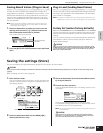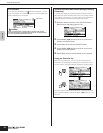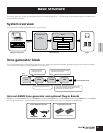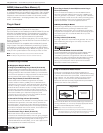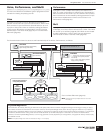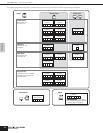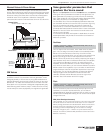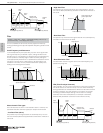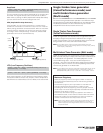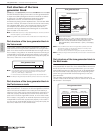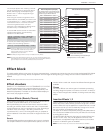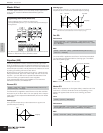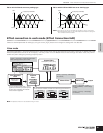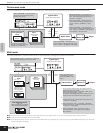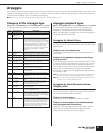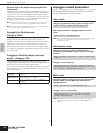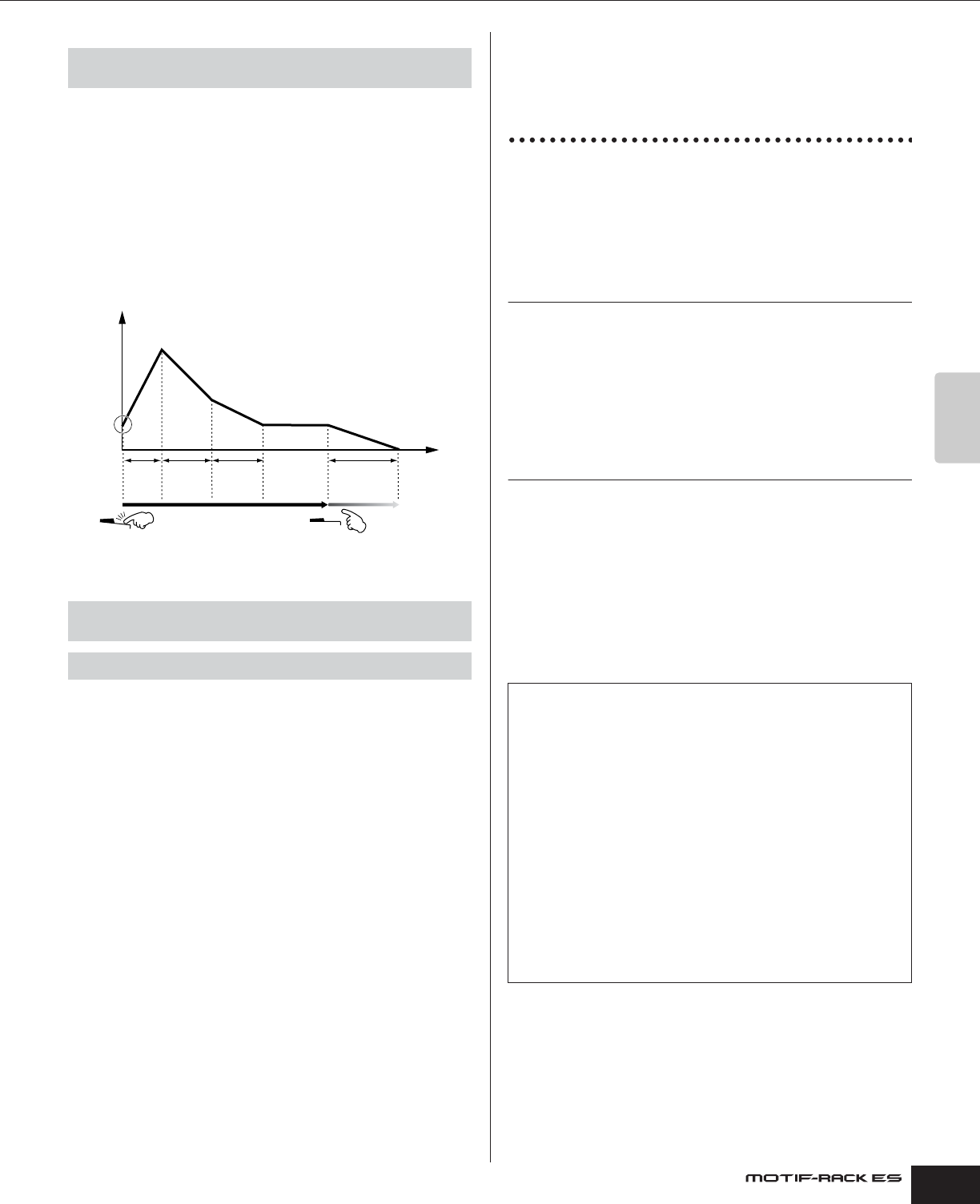
Owner’s Manual
Tone generator block Single timbre tone generator (Voice/Performance mode) and multi-timbral tone generator (Multi mode)
57
Basic Structure
Amplitude
This unit controls the output level (amplitude) of the sound output
from Filter. The signals are then sent at this level to the Effect
block. Also, by setting the AEG (Amplitude Envelope Generator),
you can control how the volume changes over time.
AEG (Amplitude Envelope Generator)
Using the AEG, you can control the transition in volume from the
moment the sound starts to the moment it stops. You can create the
AEG by setting parameters as illustrated below. When the instrument
receives a Note On message, the volume of the Voice will change
according to these envelope settings. Furthermore, different AEG
parameters can be set for each Element Key.
LFO (Low Frequency Oscillator)
As its name suggests, the LFO produces a low frequency wave.
These waves can be used to vary the pitch, filter or amplitude of
each Element to create effects such as vibrato, wah and tremolo.
Single timbre tone generator
(Voice/Performance mode) and
multi-timbral tone generator
(Multi mode)
The internal tone generator block operates in two different ways
(single timbre and multi-timbral) depending on the selected mode.
The difference between the two is whether they can handle
multiple MIDI channels at the same time or not.
Single Timbre Tone Generator
(Voice/Performance mode)
A MIDI tone generator that receives over a single MIDI channel
and plays a single instrument Part is referred to as a “single
timbre” tone generator. This is the operating status of the internal
tone generator in the Voice and Performance modes.
n To set the MIDI receive channel for single timbre operation (Voice and
Performance modes), use the following operation in the Utility mode. [UTILITY]
→ MIDI display → BasicRcvCh
Multi-timbral Tone Generator (Multi mode)
A MIDI tone generator that simultaneously receives over multiple
MIDI channels and plays multiple instrument Parts is referred to as
a “multi-timbral” tone generator. This allows playback of multi-
channel MIDI song data – such as on a MIDI sequencer or
computer – with each internal Part being assigned to and played
by a different track or channel. This is the operating status of the
internal tone generator in the Multi mode.
n To set the MIDI receive channel for multi-timbre operation (Multi mode), use the
following operation in the Multi mode. [MULTI] → select Multi → [EDIT] →
[MUTE/SEL/ENTER] (LED turns off) → select Part → Voice display → RcvCh
[VOICE] → select Voice → [EDIT] → [MUTE/SEL/ENTER] (LED turns off) →
select Element/Key → AMP display, AEG display
[VOICE] → select Voice → [EDIT] → [MUTE/SEL/ENTER] (LED turns off) →
select Element/Key → LFO display
[VOICE] → select Voice → [EDIT] → [SHIFT]+[COMMON] → LFO display
0
Level
(Volume)
Initial
Level
Attack
Level
Decay 1
Level
Sustain Level
(Decay 2 Level)
Release
Level
Attack
Time
Decay 1
Time
Decay 2
Time
Release
Time
Time
Pressing the key (Note on)
Releasing the key (Note off)
Maximum Polyphony
Maximum polyphony refers to the highest number of notes that
can be sounded simultaneously from the internal tone generator of
the instrument.
The maximum polyphony of this synthesizer is 128. When the
internal tone generator block receives a number of notes
exceeding the maximum polyphony, previously played notes are
cut off. Keep in mind this may be especially noticeable with Voices
that have a long decay or sustain.
Furthermore, the maximum polyphony applies to the number of
Voice Elements used, not the number of Voices. When the Normal
Voices that include up to four Elements are used, the maximum
number of simultaneous notes may be less than 128.
n When a Plug-in Board is installed, playing Plug-in Board Voices does not
affect the maximum polyphony of the MOTIF-RACK ES. For details on
maximum polyphony for the Plug-in Boards, refer to the owner’s manual of
the particular board.



